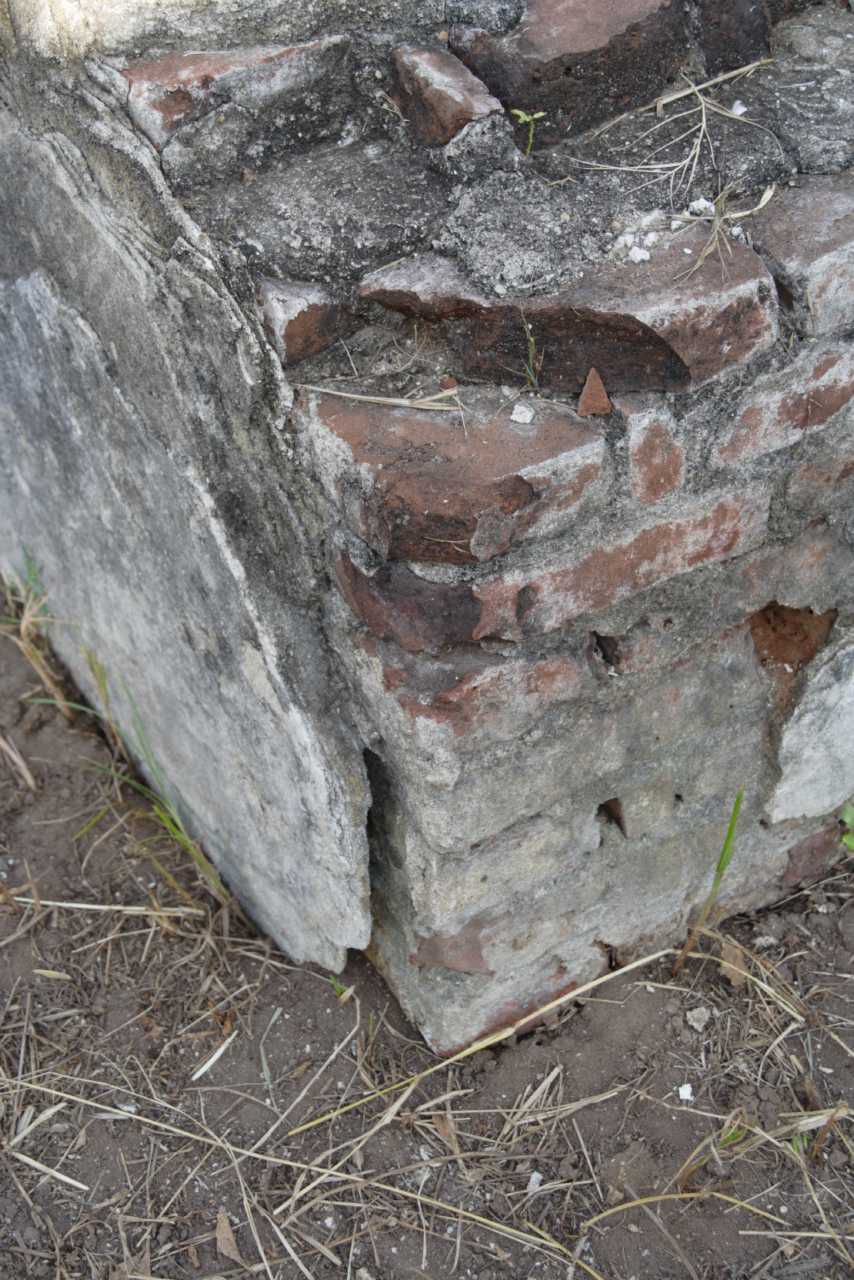
Grave monument in Tranquebar for Pauline Helved Boalth, photo 1999
Pauline Helved Boalth’s grave monument in the old cemetery in Nygade (New Street) just outside Fort Dansborg. Pauline was born in Tranquebar in 1772 as the daughter of Governor Hermann Abbestée and an enslaved woman. She married Principal Müller in 1787 but was soon widowed, and in 1793 she married the secretary Christian Tullin Boalth. Pauline became the mother of six children but died in 1801 aged just 29.
The pedestal memorising Pauline Helved Boalth is built in brick with stucco decorations like several of the other memorials to the many people in the European colonial community who died in Tranquebar over the years. Pauline’s monument has a coped upper part and a plain base. It is decorated with upper and lower cornices and bands of square keys. On the north and south sides there are recessed medallions, with faint traces of an urn just visible in the north one. There were originally inscriptional plaques on the east and west sides; the plaque on the west side was still intact by 1935, its text known from missionary Knud Heiberg’s transcript, translated here from the Danish:
Here rests
the most tender mother, the most faithful friend
the most loyal and most loving wife
Pauline Boalth
born on 10 Sept. 1772. Died on 25 Sept. 1801
Six children have lost in her their best support
and a husband his life’s joy.
The size and the original decorations of the monument tell us that Pauline Boalth belonged to the European elite in Tranquebar. Her life story is unusual, however. The missionaries in Tranquebar may well have raised a few eyebrows when Governor Hermann Abbesteé on 25 October 1772 brought his illegitimate daughter by an enslaved Catholic woman to be baptised in New Jerusalem Church, the royal Danish-Halle missionary church for the native Indian population in Tranquebar. The missionary holding the service did not bother to enter the name of the enslaved mother into the church book. At the same time the Governor’s lawful wife, Mrs. Francisca, was expecting and subsequently gave birth to a son who was baptised the following January in Zion Church, the church for the European Protestant congregation in Tranquebar.
The Governor took good care of his daughter Pauline. On 26 December 1787, at the age of 15, she was married in her father’s house, the Governor’s Residence, to Principal Müller. She was soon widowed, however, and on 15 August 1793 she remarried, this time in the house of merchant Gowan Harrop, to secretary Christian Tullin Boalth. The Zion Church book notes that the bridal prie-dieu and carpet was used. The couple came to have six children. She died on 25 September 1801, just twenty days after giving birth to her sixth child, a son baptised Herman after his governor grandfather. The official status that Pauline enjoyed may give rise to puzzlement. Her first marriage took place not only in her father’s house, but also on nineteenth anniversary of her father and step-mother’s wedding day! The missionaries, however, certainly took a somewhat dim view of the Governor’s morally lax lifestyle. When Hermann Abbestée became interim governor on the death of Governor Herman Jacob Forck in 1761, Missionary Johan Balthasar Kohlhoff wrote the following about the two men: “[The former Governor Forck] was a father and did no harm to any child. The successor [Abbestée] seeks money and lives in constant im¬morality. Oh, alas for the town of Tranquebar!"